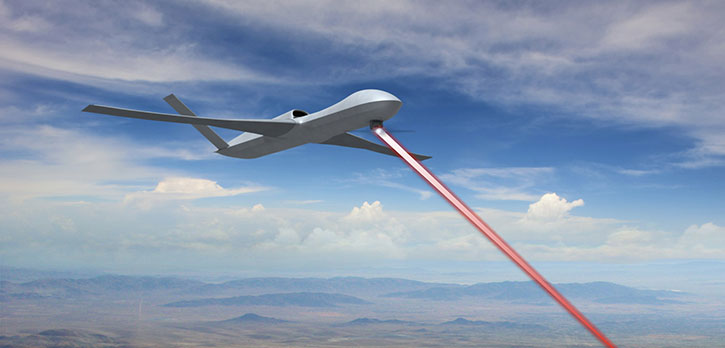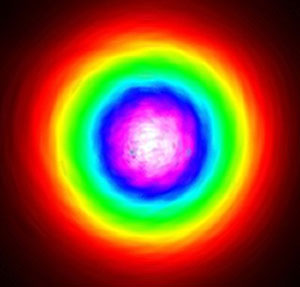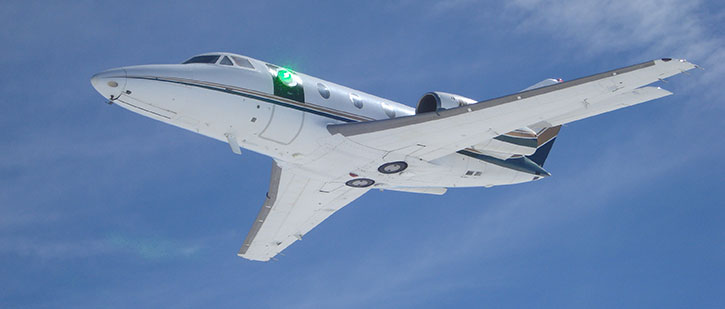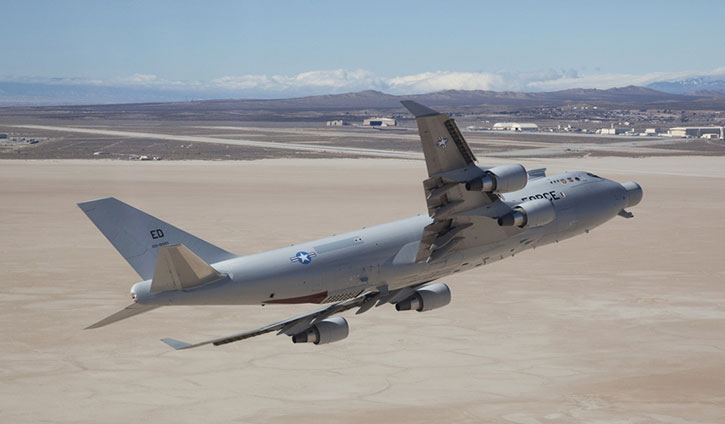
Missile Defense Lasers for UAS
The boost phase offers a golden opportunity for missile interception. If possible, interception of such slow and heavy targets over the enemy territory, where it is vulnerable to attack, will reduce the number of targets and decoys that defenders should tackle in follow-on phases. Eliminating as many missiles from the initial salvo at the boost phase, will thin out the salvo and kill the targets early in their trajectory, possibly before any countermeasures are deployed.
But boost-phase intercept is easier said than done. Common missile-based interceptors are not suitable for this application while high power lasers, that can fry targets within few seconds would be the most appropriate for the task. “Getting them in the boost phase is really critical for improving our capability in missile defense,” explained Richard Matlock, MDA’s program executive for advanced technology.

Previous airborne lasers required megawatt-power chemical lasers mounted on large platforms that rendered the whole application impractical. However, recent advancement in solid-state, scalable lasers enables integration of relatively compact lasers that can deliver coherent laser beams at power levels of tens, even hundreds of kilowatts. When used high in the stratosphere, where the thin air transfer light with minimal distortion, such power levels are sufficient to destroy missile targets from a long distance.

Such lasers are under development at the Massachusetts Institute of Technology’s Lincoln Laboratory (MIT/LL) and the Lawrence Livermore National Laboratory (LLNL). The Fiber Combining Laser developed at the MIT/LL already achieved 44 kilowatts (kW) continuous power with nearly perfect beam quality, a record for fiber combined lasers. Next year the laboratory will demonstrate another laser of this type designed to deliver 30 kW from an apparatus that weighs only 270 kg. The lab also works on a flight-qualified amplifier that adds only one kg per kW, that could bring the laser to the power levels required for missile defense. LLNL achieved similar success with their Diode Pumped Alkali Laser (DPAL) system, reaching 14 kW, a record for the DPAL system. In FY 2017, LLNL will demonstrate a DPAL system at 30 kilowatts average power, more than double the power ever achieved by a hybrid laser.
In the next phase, MDA will equip different unmanned platforms with high power laser systems for testing commencing in 2021. Lockheed Martin, Boeing, Northrop Grumman, Raytheon, and GA-ASI are all competing for these opportunities; MDA plans to award two contracts by 2017. Among the platforms likely to be considered are the Phantom Eye from Boeing, General Atomics’ Avenger and Global Hawk from Northrop Grumman.
“Our long-term goal is to deploy lasers on high altitude, long endurance Unmanned Aerial Vehicle (UAV) platforms to destroy ICBMs in the boost phase.” Vice Admiral J.D. Syring, USN, Director, Missile Defense Agency concluded, “A UAV-borne laser would be capable of acquiring, tracking and eventually destroying an enemy missile at a much lower cost than the existing BMDS.”
Beyond intercept, these UAVs will also support ascent and midcourse tracking and target discrimination, as an alternative targeting method to ground or ship-based radars, alongside space-based sensors.[ismember]
Technology Demonstrators
Other AFRL programs evaluate various aspects of laser behavior at high-speed flight. Past assemblies limited the integration of lasers to the front of the aircraft. However, in order to engage targets over 360 degrees, such systems should be equipped with optical assemblies that compensate for atmospheric turbulence. Such a system was developed by Lockheed Martin and tested in 2015, with a prototype laser turret provided for the Defense Advanced Research Projects Agency (DARPA) and the Air Force Research Laboratory (AFRL). The Aero-adaptive Aero-optic Beam Control (ABC) turret is the first turret ever to demonstrate a 360-degree field of regard for laser weapon systems on an aircraft flying near the speed of sound. Its performance has been verified in nearly 60 flight tests conducted in 2014 and 2015 using a business jet as a low-cost flying test bed. As the aircraft traveled at jet cruise speeds, a low-power laser beam was fired through the turret’s optical window to measure and verify successful performance in all directions.
The design uses the latest aerodynamic and flow-control technology to minimize the impacts of turbulence on a laser beam. An optical compensation system, which uses deformable mirrors, then is used to ensure that the beam can get through the atmosphere to the target. Left unchecked, turbulence would scatter the light particles that make up a laser beam, much like fog diffuses a flashlight beam. DARPA and AFRL will use the results of the flight tests in determining future requirements for laser weapon systems on high-speed aircraft and expanding their effectiveness.


Since the advent of lasers more than four decades ago, solid-state and gas lasers have followed divergent development paths. Gas lasers are based primarily on direct electrical discharge for pumping (energizing), while solid-state lasers are pumped by flashlamps and semiconductor diode laser arrays.
The alkali vapor laser developed at Lawrence Livermore National Laboratory (LLNL) has intrinsically high efficiency; its compatibility with today’s commercially available diode arrays enable rapid development paths to tactical systems, with mass-to-power ratios that far exceed what is possible with other laser systems available today.
Building on alkali vapor laser research done by Z. Konefal, NIF & Photon Science engineers and scientists recently developed a new class of laser that combines features of both gas and solid-state lasers, based on diode excitation of atomic alkali vapors. The defining character of the diode-pumped alkali laser (DPAL) are its ability to be incoherently pumped and its compatibility with diode arrays having several-nanometer-wide spectral emissions. These characteristics distinguish DPALs from previous demonstrations of alkali-based lasers that used narrow-band, coherent pumping to demonstrate lasing. LLNL is the world leader in the development of this new class of laser. The first DPAL was demonstrated at LLNL in 2002; since then, more sophisticated and powerful evolved.[/ismember]
















